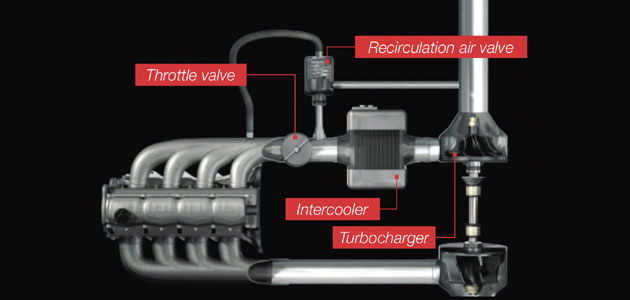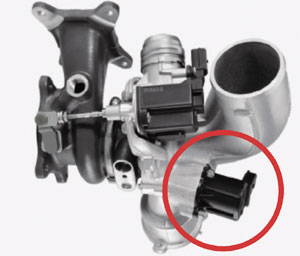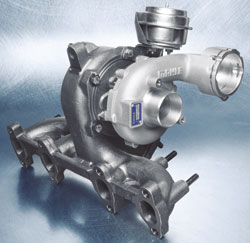
Unfortunately, simply installing a direct replacement may not be the end of the story when a workshop is faced with a problematic turbocharger.
If performance problems in a petrol-engine vehicle persist, even after the replacement has been fitted, the issue may well be due to a malfunctioning recirculation air valve (RAV).
If the RAV is damaged or malfunctioning, the inevitable result is poor engine responsiveness and, to make matters worse, the problem could even lead to the turbocharger failing as a result of it being overloaded.

The RAV is installed either directly on the turbocharger itself or in the pressure side area of the charge air line. Poor engine performance can be caused by factors such as a ruptured membrane on the inside, leaking control lines or corroded plug contacts.
With electronic RAVs, an entry is generally created in the ECU, so checking the fault memory will save workshops a lot of time and unnecessary labour.
What does a RAV do? The task of the RAV is to take a proactive measure against turbo lag by preventing a backlog of charge air, which can accumulate as a result of gearshifts and causes the deceleration of the rotating assembly.
The task of the RAV is to take a proactive measure against turbo lag by preventing a backlog of charge air, which can accumulate as a result of gearshifts and causes the deceleration of the rotating assembly.
If the driver suddenly eases off the accelerator pedal at high turbocharger speed, it will cause the throttle valve to close and high dynamic pressure to be generated on the compressor side, which cannot escape. This counter pressure drastically slows down the impeller and leads to high mechanical loads on the turbocharger and the closed throttle valve. Once the gear change is completed and the throttle valve reopens, the turbocharger has to be brought up to speed again, which is why there is a delay.
RAVs minimise the delay following these load changes – commonly known as turbo lag – by releasing the accumulated charge air between the compressor side and the closed throttle valve via a bypass. Once it has passed through the compressor, it is guided back into the intake section ahead of the turbocharger.
This loss of pressure on the compressor side prevents a deceleration of the impeller and when the throttle valve reopens, the RAV closes and the boost pressure increases immediately. Therefore a noticeable drop in performance should always lead technicians to check the RAV before replacing the turbocharger.

Turbo range
Through its joint venture with Bosch, MAHLE Aftermarket is now able to supply the UK aftermarket with an extensive range of OE quality turbochargers for petrol engines developing 45-220 kW and diesel engines rated between 35-165kW.
Latest additions to the MAHLE Original range are part numbers 011TC17498000 for four cylinder 92kW engines fitted to Vauxhall Vectra, Saab 9-3 and various Volvo models, 082TC14411000 for four cylinder 135kW engines used in BMW 3 Series and X5 models and 222TC15242000 for three cylinder engines fitted to the Smart range.









